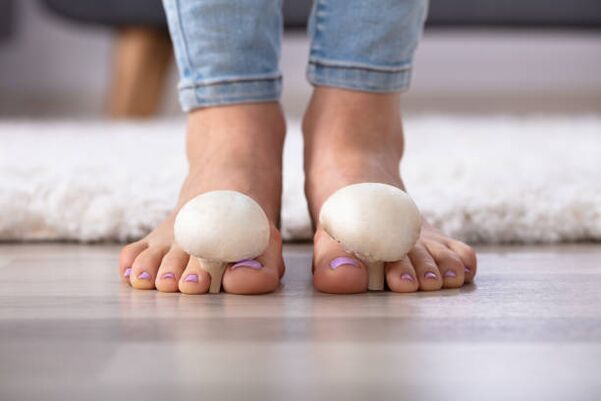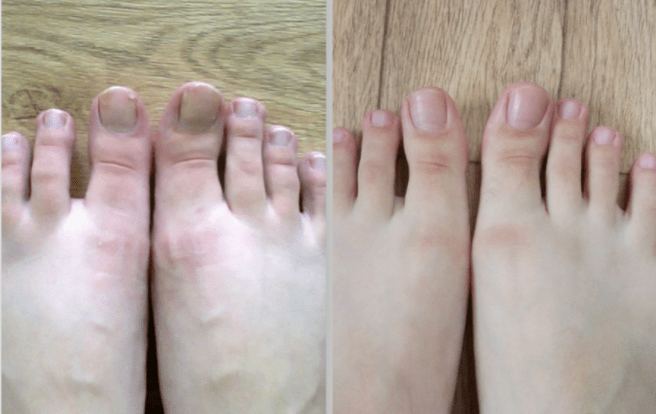
There is a separate but very common representative of mycosis, toenail fungus; it is this area of the human body that is often susceptible to fungal infections. Very often, a fungal infection of the leg is diagnosed in a child, adults suffer from this disease just as often. Around 27% of the European population suffers from problems due to onychomycosis.
Professional diagnosis and treatment of nail fungus is carried out in clinics such as Prima Derm, where a doctor, podiatrist and laboratory tests will help determine at what stage the disease is, its type and the type of lesionlocal. Onychomycosis is a serious disease that leads to serious consequences, and the need for treatment is beyond doubt.
Types of onychomycosis (nail fungus)

Before starting treatment, it is necessary to diagnose what type of fungus affects the nails, then prescribe treatment and take measures. To better understand this unpleasant disease, we must consider all types of nail fungus; To do this, we will divide them into types based on location and location, as well as more familiar ones based on medical classification.
- Distal, lesion of the free edge of the nail. Perhaps as a result of or causing onycholysis;
- Lateral, when the lateral part of the nail is affected with the resulting inconveniences. May accompany an ingrown toenail;
- Proximal. The back of the nail is affected. And the deeper the lesion is from the edge, the more difficult it is to treat and restore the nail;
- Total. Here the word itself speaks for itself. The entire nail as well as neighboring cuticles are affected.
There are also several types of onychomycosis on the legs, the disease is divided depending on the symptoms and appearance of the fungus.
Normotrophic onychomycosis
One of the first stages of mild nail damage, but with obvious signs of fungal infection.
- Presence of itching on the fingernail;
- Change in nail color;
- Stains and scratches may be one of the symptoms.
The treatment method is local and medicinal, with the possible preservation of the integrity of the nail plate and the shape of the nail. Prevention also involves stimulating the immune system, fresh air, good nutrition and eliminating bad habits.
Hypertrophic
Here the damage to the nail is more extensive. And the existing nail can be restored, but over a longer period. It is at this stage that the disease really begins to bother and the patient becomes interested in what onychomycosis is.
- Not only does the color of the nail change, but it also becomes dull;
- The shine is lost;
- Thickening and deformation are likely; these changes are more common in adults;
- The process of destruction of the nail plate begins.
Mechanical removal of some affected areas is more likely. Medication intervention is already mandatory and the use of local treatment and curative treatment will be prescribed by a doctor.
Onycholytic
Or as it is also called atrophic. Judging by the name, it is clear that partial or complete atrophy of the toenail occurs. This is how nail onychomycosis manifests itself at the last stage of development, when the treatment is already longer and the result will not be visible soon.
Unfortunately, after losing a nail, recovery is long and the procedure is extremely painful. At this stage, the disease must be treated comprehensively with immunomodulatory therapy.
To determine the type of onychomycosis and its stage of development, it is recommended to undergo tests and consult a podiatrist. A professional approach to diagnosis will help you choose the right treatment algorithm and the necessary therapeutic and aesthetic measures.
Causes of fungus on nails
It is difficult to list all the causes of nail fungus, but we can make a list of the most common situations leading to this disease. And the main causes of onychomycosis are direct infection of the carrier and low immunity.
- Wearing tight shoes and insufficient ventilation provoke the development of the pathogen. And nail fungus treatment begins with changing shoes to more suitable ones;
- Manicure. Decorative varnishes and gels are applied to the layer of your nail; incorrect application leads to peeling of the coating and the development of fungi and other bacteria under the gel;
- Working conditions, unfavorable living conditions and constant exposure to a greenhouse atmosphere, with minimal hygiene;
- Hormonal imbalance and disruption of the thyroid gland and adrenal glands;
- Take antibiotics. The attending physician must take this point into account and immediately prescribe antifungal medications as well as antibacterial drug treatment;
- Low immunity and immune diseases, one of the first signs of decreased immunity, are fungi;
- Past serious illnesses. Low immunity and a weakened body are not at all resistant to fungi;
- Stress and psychological problems and disorders also reduce immunity quite significantly;
- Mechanical damage to the nail or trauma violating the integrity of the nail plate.

Here are the main causes of toenail fungus. If you correctly observe personal hygiene and caution, you can avoid this unpleasant infection. Also avoid going to public places without special shoes, including: spa salons, swimming pools, saunas, gyms, changing rooms in public places, as well as public showers.























